
Auxiliary lighting: a necessary, effective addition to any off-roading or trail rig. Whether itís massive candlepower for running fast at night, under-rig lighting that helps your spotters spot, or just a decent set of lamps up front for illuminating a strange trail when youíre bumping back to camp, you canít go wrong with additional lighting (unless, of course, you put on so much that it overpowers your truckís charging system).
Weíre out to accomplish two things in this story:
1. Show you a trick for making a set of lamps easily removable so you wonít have to worry about your lamps being lifted.
2. Alleviate some of the stigma of using the prefab wiring harness supplied with most lighting kits. In this case, weíll use the slightly convoluted but unequivocally useful wiring harness provided with our PIAA lights.

What Lamps, Where We Put ĎEm, and How
We had some PIAAs kicking around that needed a home Ė a groovy set of the angel-eye 525s. The Addicted Off-Road trail bumper we planned as their home had just the right space under the truncated stinger for the large 525 lamps, so we incorporated tabs prior to powdercoating. Because this gen-three 4Runner occasionally gets left overnight downtown or at the airport, we needed a mechanism to make those lights secure from theft or easily removable (and to keep their aim intact when removed). To do so, we needed to be able to pull the lights but not loosen the bolt that served as both the lampís base and its aiming pedestal. This meant the way we mounted them to the bumper had to be a separate process from how the lamps attached to their base, and re-mountable in a way that would be repeatable and thus keep the lights aimed. To keep one lampís aim consistent in relation to the other, the lampsí mounting points had to be connected in one piece.
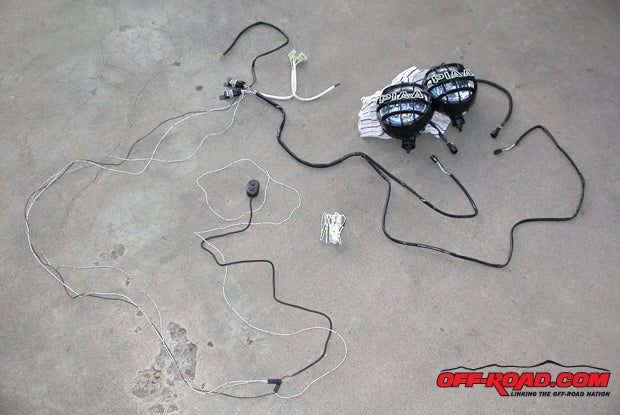
We had a lump of aluminum plate shaped by our pal Mark, the master fabricator behind Fageol Superchargers, to pick up the extant bumper-to-light tabs and relocate the PIAAs to the backside of the main bumper tube. This provided a secondary set of mounting points for the PIAAs that would not need to be loosened when removing the lights. Now, because the tabs originally welded to locate the lights directly under the Addicted bumperís stinger were now being used to secure the bracket instead of the lamps, the lamps could be moved slightly behind the stinger (going behind the main tube allowed the bracket to rest on the main bumper tube for added stability, and recessed the lamps a little). The lampsí new mounting points were moved slightly together to prevent their beams from being obstructed by the stinger itself.
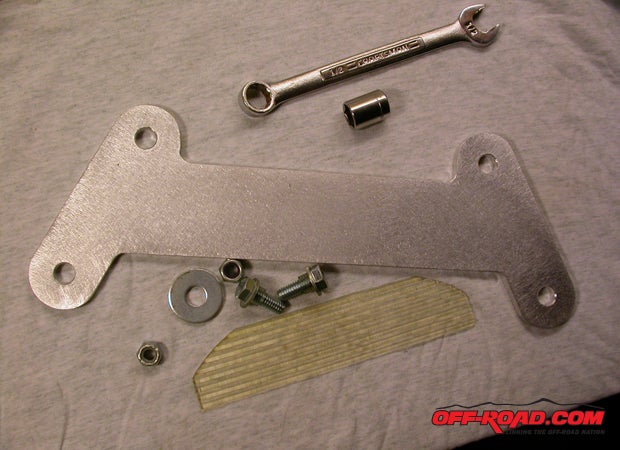
Securing the light and bracket assembly is straightforward. Two bolts and locknuts, with rubber isolators and ample washers to ensure their snug, vibration-free fitment, hold the light bracket to the bumper tabs, and the factory mounting hardware on the 525s mounted them to the bracket. If you use bolts with common sizes Ė ours are ½-inch on both sides Ė a couple I-already-have-three-of-these wrenches can live in your glovebox for when the lights need to be removed at a momentís notice. As for the bracket, a few strategically placed pieces of sticky-backed foam padding allowed us to lay the bracket firmly across the bumper tube itself.
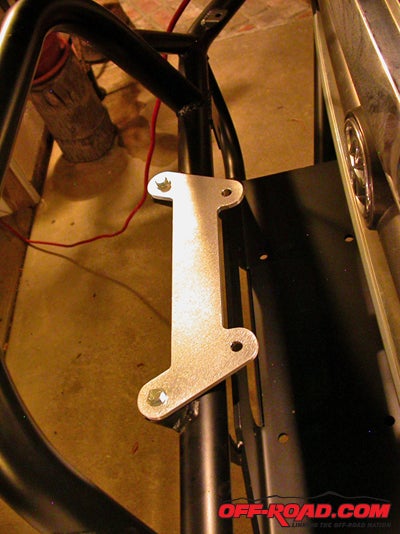
Getting Wired
In past wiring projects on our third-gen 4Runner trail rig, weíve been creative about it. For instance, the auxiliary fan we wired up was a second-gen 4Runnerís electric pusher that we ran with a modified version of the gen-twoís fan relay harness that we wired into the third-genís engine harness, controlled through an interior fan switch that we picked up at the junkyard and rebuilt to handle the external fan. It was fun, but not simple. Lots of smart people wire up their auxiliary lighting this way, routing their cables and stashing their relays and switches in all sorts of fun nooks to make it invisible or sexy or obvious. Sadly, sometimes the creative process can be time consuming, and the easiest option is to use the harness supplied with the lamps. Using the supplied harness also helps if youíre new to this sort of thing or havenít learned all the tricks yet, because a pre-assembled harness takes care of the heavy thinking. Our PIAA 525s came with a relatively slick harness, and installed neatly, itíll get the job done.
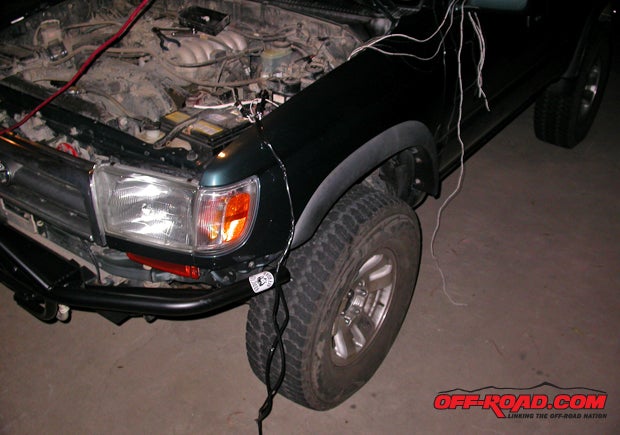
Speaking of necessary, when using a prefab harness, you must visualize how itíll be routed. If you wire up lamps using your own wire and relays, you can make stuff as long or as short and put it wherever you like, but using a pre-fabricated harness with pre-cut wire and pre-fixed fixtures and pre-installed relays, the harness needs to fit everywhere just the way it is Ė that means compromise. Using the pre-fab harness therefore occasionally requires a few not-quite-what-you-want mounting locations that are paired with your truckís design and function Ė compromises.
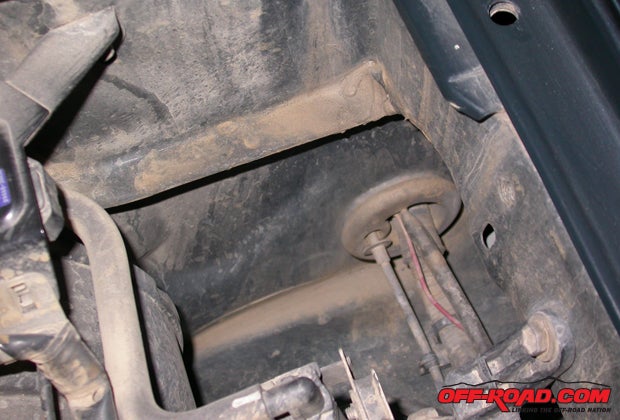
As the PIAA harness is already assembled with the necessary relays, switchgear and grommets to plug-n-play its installation, your job becomes plumbing it properly. Seek out OEM wire corridors already established for your truckís wiring. For instance, every gen-four Toyota pickup and gen-three 4Runner owner knows the wire port that runs from the driverís-rear of the engine bay to above the driverís left foot when on the dead pedal, and it has a convenient boot that allows the passage of additional wires without compromising the seal (much). We used a single piece of copper wire to pull the entire switch harness lead through that wire nipple, and stashed the PIAA switch behind the driverís fuse panel door with slack to spare. From there, we verified that the relays still could be mounted in a safe space high inside the driverís fender.
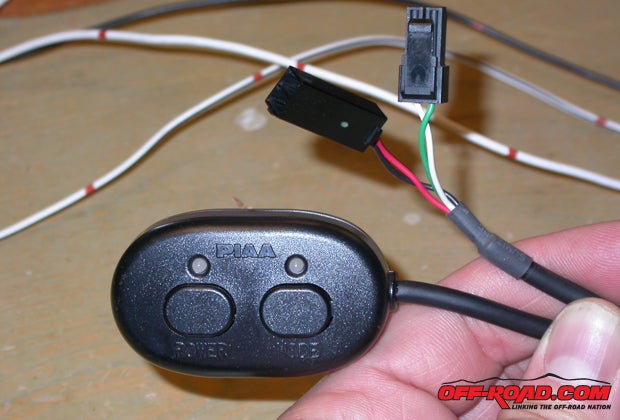
Follow the route of OEM wiring corridors and avoid having random wires zooming around the cabin and engine bay. Donít be afraid to use a few zip-ties Ė it makes identifying where things run easier, and you can disassemble things quicker too. Either zip-tie the harness wires directly to the extant OEM wiring (not too tight!), or use the bow-tie zip-tie method. The bow-tie zip-tie trick is easy Ė run one zip-tie loosely around both the new wire and the existing one, and then put the second zip-tie around the first looped zip-tie, between the existing wire and the new one. Looks cool, creates presentation-quality separation.
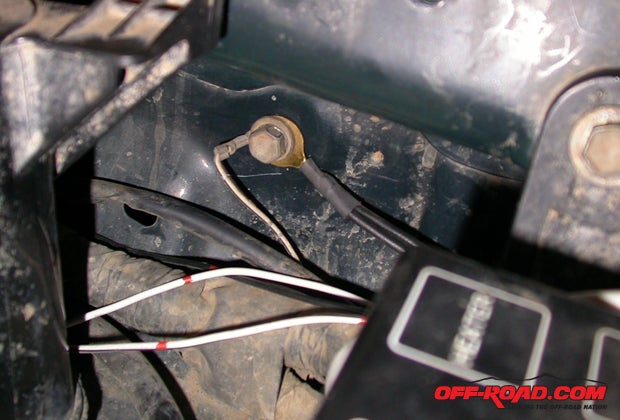
Speaking of using existing OEM design and parts, the same strategy works for grounds and power points. As with all wiring, but even more so with the wiring harness supplied with the lights, donít reinvent the wheel. There are already a ton of good grounds in the engine bay Ė a third-gen 4Runner has dozens Ė and power points are already available, fused or not, within a step or two of the battery. Find a fuse box in the engine bay Ė thereís one six inches from the battery on a gen-three 4Runner Ė and connect the main power lead for the lighting to an existing battery or ignition-powered point of juice. Remember to figure out if youíre getting switched power or battery power.
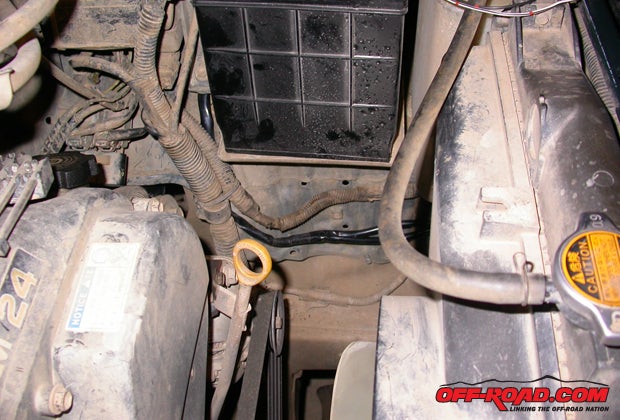
You could use the as-provided harness but shorten its leads, but this would inevitably lengthen the wiring process. We figured that with a little smart routing, we could use most of the length of the supplied harness and not need to start and stop a bunch of new connections. Besides, a zip-tie or two could tie up any slack to keep things neat.
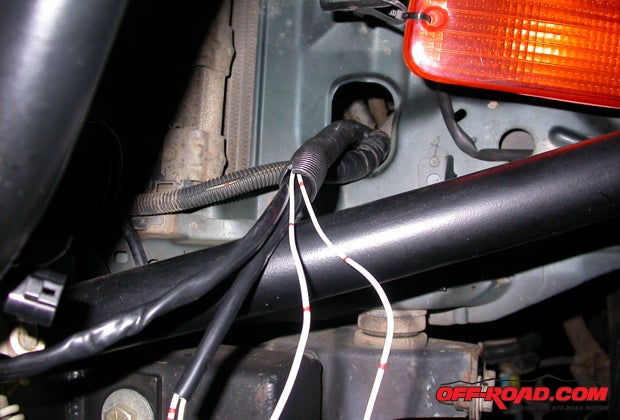
One of the little details of automotive wiring that newbs miss (or forget) is cable sheathing. Itís cheap, comes in a gazillion styles, it makes pushing wiring around the interior or engine bay look good (and stock), and it protects the oftentimes thin wires. We used it to route the lamp leads alongside OEM cables under the battery and through an OEM port in the sub-bumper, and it looks like stock.
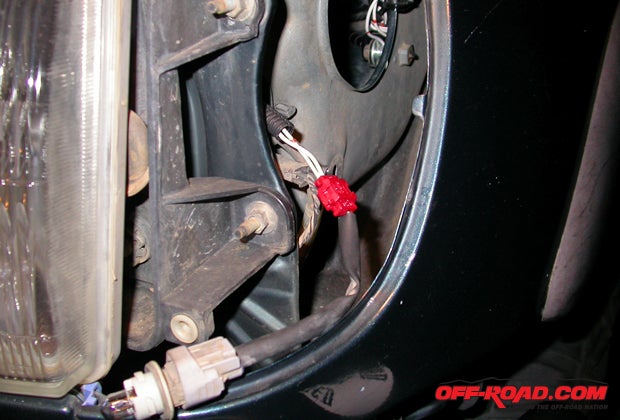
In the spirit of the ďas prescribed in the PIAA instructionsĒ wiring for this project, we also employed the oft derided but absurdly simple vampire clip to pick up an on/off signal for the 525s. As we wanted to be able to operate these lamps when the parking lights are on Ė for off-road use, of course Ė we needed a power signal from the parking lamps. Instead of latching on to this cable at the fuse panel in the cabin, which is an electrical part we prefer not to muck with if possible, we latched onto the driverís forward parking lamp itself, and bit into the cable at a break in the sheathing near the parking lamp. Itís protected by a fuse and itís close to the center of the PIAA harness so the signal wire that ran to it from the harness could be nice and short.
Remember, it is this easy.
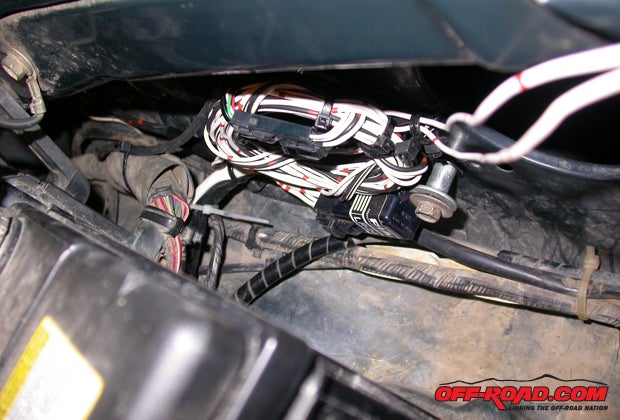


 Your Privacy Choices
Your Privacy Choices